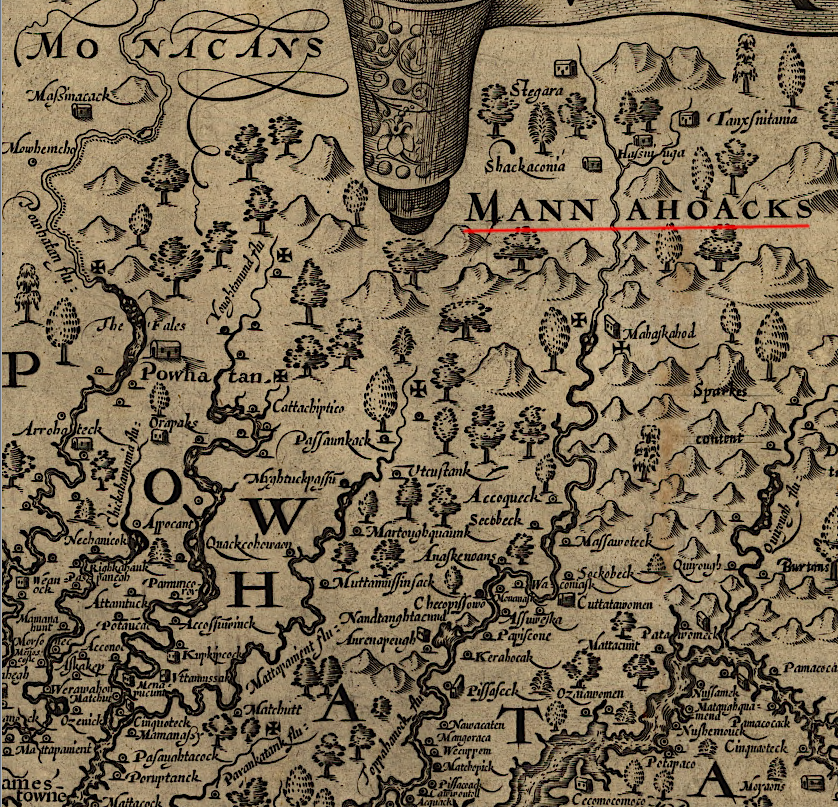
John Smith documented that the Manahoac lived north of the Monacan (Note: north is to the right)
Source: Library of Congress, Virginia (by John Smith, 1624)

John Smith documented that the Manahoac lived north of the Monacan (Note: north is to the right)
Source: Library of Congress, Virginia (by John Smith, 1624)
John Smith recorded the presence of the Manahoac. He placed them west of the Fall Line, in the upper reaches of the Rappahannock River between the Monacan to the south and the Massawomek to the north.
Smith met one of the Manahoac when he sailed/rowed up the Rappahannock River in 1608. Smith had sailed into a group of about 100 that were on a fishing expedition. When they fired arrows at his boat, wooden shields raised for defense deflected the arrows. The Manahoac had no equivalent defense against the English muskets, and after a half-hour fight the warriors retreated.
One man had been wounded and left for dead by his fleeing companions, but the English surgeon was able to help him recover. Smith's guide Mosco helped him communicate with the captive, called Amoroleck, as they spent the night on what is now called Belmont Hill, in Stafford County across from Fredericksburg.
He revealed that the people shooting arrows at John Smith's boat came from the town of Hasinninga, and the Manahoacs also lived in three other towns ruled by leaders that Smith labelled as "kings."
In addition to the towns of Stegora, Tauxuntania, and Shakahonea, there was also another town occupied occasionally by hunting parties called Mohaskahod. That town was on the eastern boundary of the Monacan, near the rival Algonquian-speaking Nandtaughtacund who belonged to Powhatan's paramount chiefdom.
Smith was unable to learn from Amoroleck what tribes occupied lands to the west of the Manahoacs. They apparently did not travel or hunt through that area "because the woods were not burnt." Evidently the Monahoacs practiced prescribed fire to create habitat for deer and turkey, but focused on the Piedmont and did not set fire to the wooded hillsides of the Blue Ridge.
The four Monacan "kings" came to trade with the English, after Amorolek convinced them that the strangers were friendly. At the end of the day, John Smith had obtained intelligence about the relationships between the Manahoac towns and with different groups, the size of the population in the region, and the geography of territory he did not get to visit in person. When he led his expedition downstream again from the Fall Line, Smith wrote that:1
Few contacts with the Manahoac were recorded by early colonists, who stayed east of the Fall Line for the first 50 years of settlement. The Manahoac are thought to have been a Siouan-speaking group, allied with the Monacan, Tutelo, and Saponi. They were rivals of the Algonquian-speaking groups east of the Fall Line, such as Powhatan's paramount chiefdom amd the Piscataway chiefdom to which the Dogue/Moyumpse belonged.
The Manahoac lived in separate towns which were united with other Siouan-speaking tribes west of the Fall Line in some form of confederacy, perhaps with a paramount chief. John Smith identified five towns - Mahaskahod, Tauxnitania, Hassininga, Stegara, and Shackaconia.
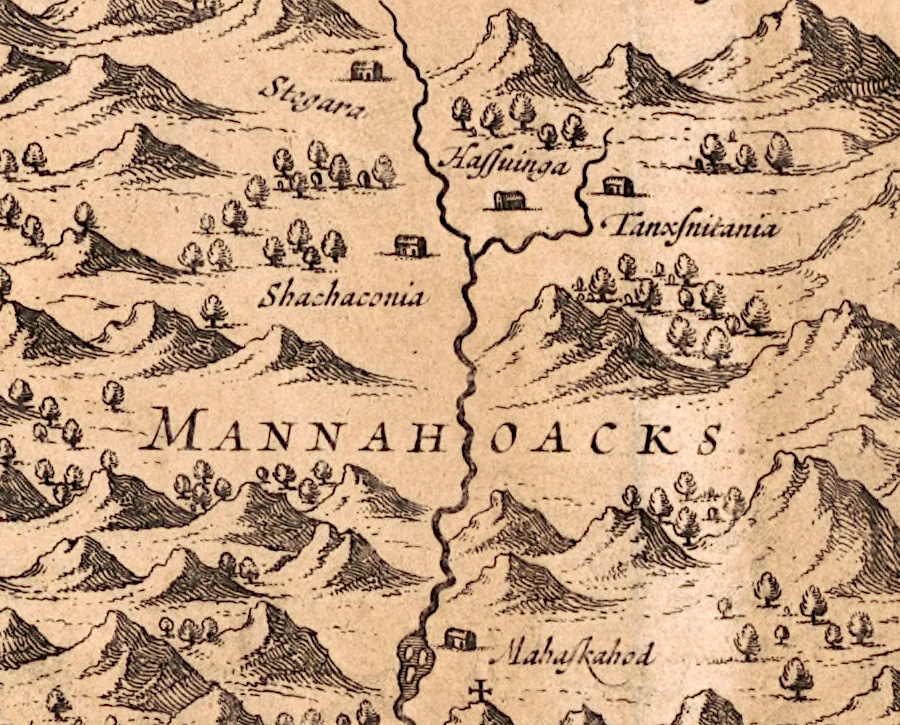
the Manahoac towns included Stegara/Stegora, Shackaconia/Shakahonea, Tanxsnitania/Tauxuntania, Hassuiuga/Hasinninga and Mahaskahod/Mohaskahod
Source: Library of Congress, Nova Virginiae tabvla (by Willem Blaeu in 1635, cartography by Hendrik Hondius in 1642)
Residents of Stegara may have held ceremonies at the Rivanna River mound which Thomas Jefferson excavated. The Monacan could also have held ceremonies there, since the mound could have been started by previous cultures before the evolution of the Monacan and Manahoac confederacies.2
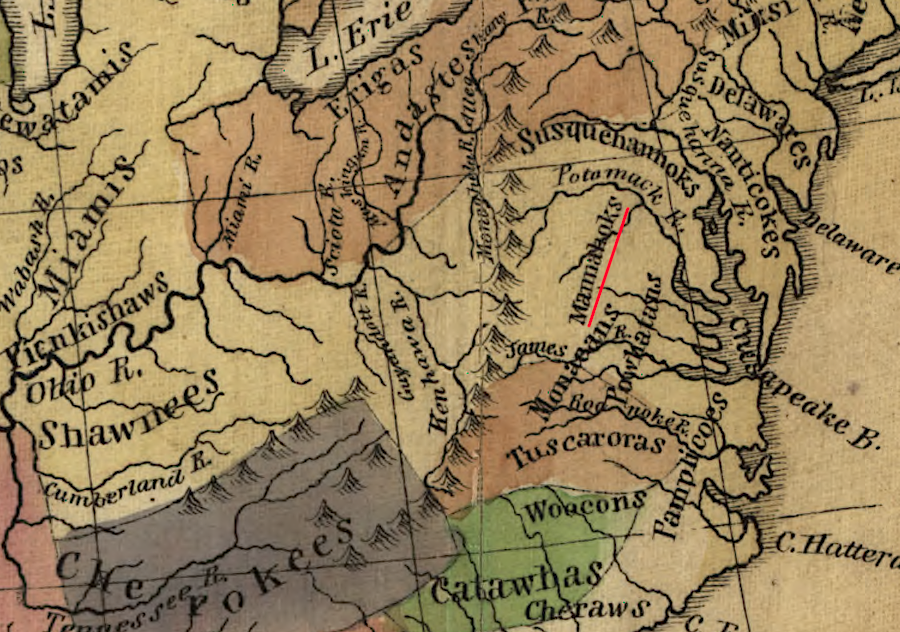
early English colonists recorded the Manahoac living east of the Blue Ridge, between the Rappahannock and Potomac rivers
Source: Library of Congress, Map of the Indian tribes of North America, about 1600 A.D. along the Atlantic, & about 1800 A.D. westwardly (Albert Gallatin, 1836)
The Mahahoac and Nahyssan groups combined in 1654 to defend against raids by the Iroquois, coming down from the St. Lawrence River valley. The Manahoac moved from near modern-day Culpeper and the Nahyssan moved from Monahassanough (perhaps excavated in modern times as the Wingina site in Amhert County) to the Fall Line f the James River. The English recruited the Pamunkey to drive then back west into the Piedmont, but the Siuoian-speaking groups won the battle in which Pamunkey chief Totopotamoi died.3
In the 1600's, the Manahoac were caught between the aggressive Iroquois to the north and the Cherokee/Catawba to the south. War parties traveling along the east side of the Blue Ridge disrupted the Manahoac settlements, along with those of the Monacan, Tutelo, and Saponi to the south. John Lederer reached the Blue Ridge in 1669-1670, and encountered the Monacana on the James River at their town Massinacack. However, he recorded few interactions with Siouan-speaking residents.4
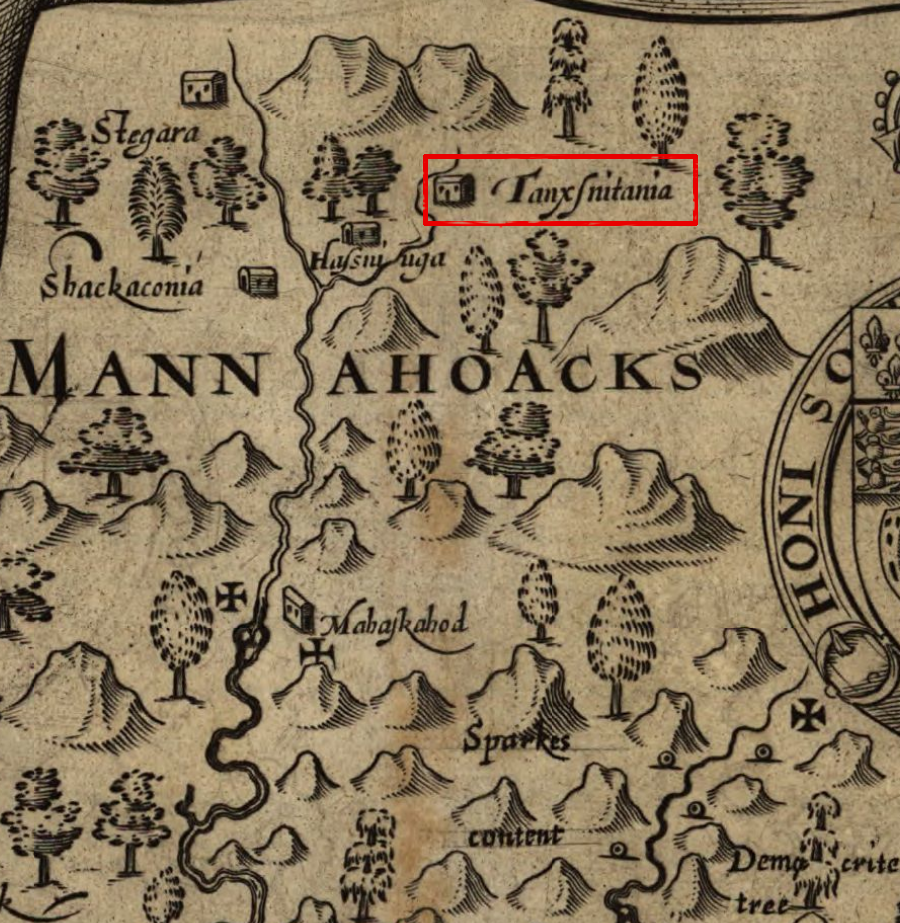
Amorolek told John Smith that the town of Tauxuntania was upstream of the Rappahannock River's confluence with what we now call the Rapidan River, perhaps near modern-day Remington or Waterloo
Source: Library of Congress, Virginia (by John Smith, 1624)
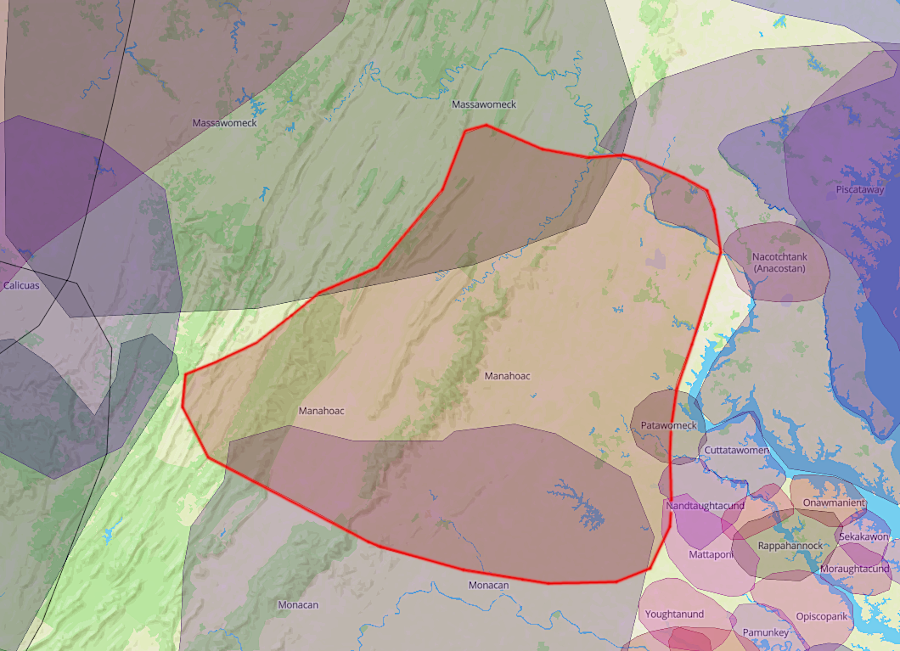
multiple tribal groups may have competed with the Manahoac to control territory
Source: Native Land Digital
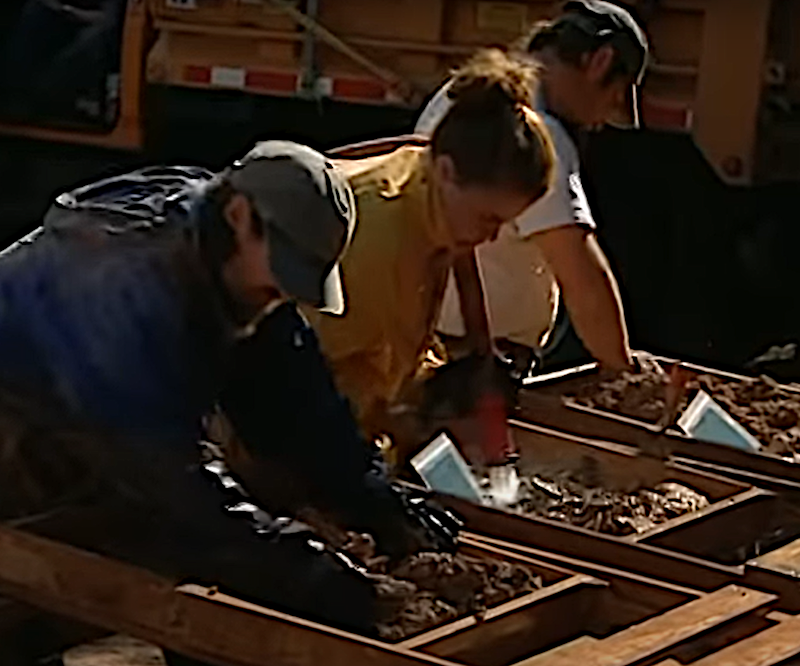
archaeology can provide insights into lifestyles of Native American groups which are not documented in historical records compiled by European colonists
Source: Virginia Department of Transportation, VDOT: Discovering the First Virginians